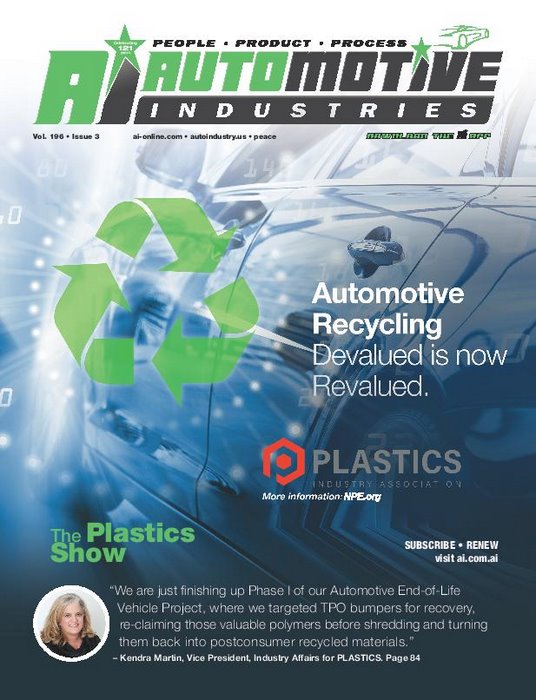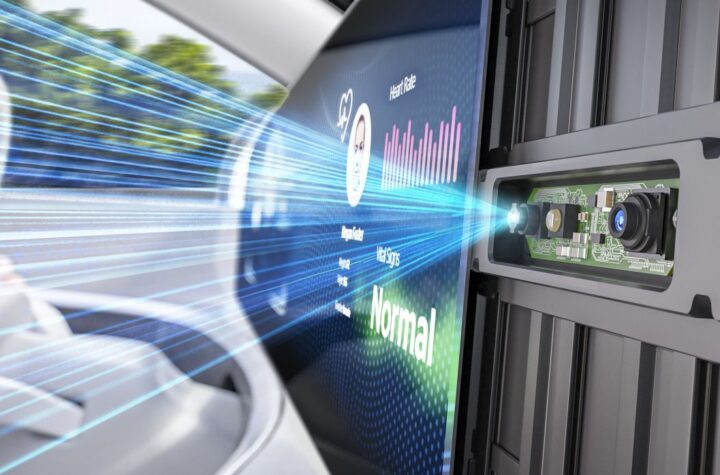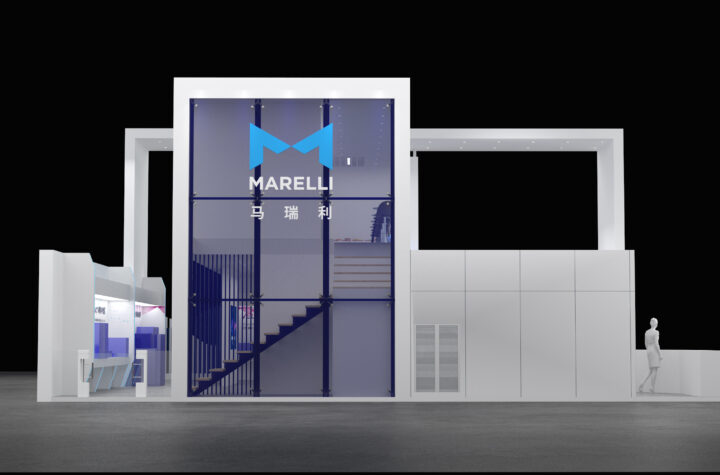
All links in the plastics supply chain will be represented at NPE2018: The Plastics Show. The triennial international plastics event is being remodeled to reflect the growing use of plastic materials in all sectors, including automotive.
The Plastics Industry Association (PLASTICS) has unveiled a modernized NPE logo and announced its new show tagline for NPE2018. The new logo features more modern colors and updated creative elements while staying true to the ‘globe and banner’ aspect the NPE brand has been known for through the years. The new tagline, “The Plastics Show”, replaces the old tagline of “The International Plastics Showcase”.
“The changes are aligned with our need to continue attracting more end markets to the show so they better understand the material of plastics and its many wide and varied applications for products. The tagline is more inclusive and attractive to more professionals within the plastics product lifecycle, from ideation to finished product to recycling and reuse,” says William Carteaux, the president and Chief Executive Officer of PLASTICS.
Opportunities identified for manufacturers of vehicles, automotive components and aftermarket parts include:
Opportunity #1: Make them lighter.
It’s a given. New fuel efficiency regulations will require that cars—and everything that goes into them—weigh less.
Opportunity #2: Make them safer.
Demand for safe cars isn’t new, but the challenge grows when coupled with the concurrent need to make they safer and more technologically advanced.
Opportunity #3: Make them more eco-friendly.
Fuel-efficient vehicles are one thing, but consumers want materials and manufacturing processes that are planet-friendly too.
Automotive Industries (AI) asked Kendra Martin, Vice President, Industry Affairs for PLASTICS what has been the response to the new positioning and brand.
Martin: The response has been tremendous, particularly from our members who are the brand owners and OEMs, who in many cases are newer participants in PLASTICS. Our new name and branding is much more straightforward. For someone in the automotive or consumer packaging or healthcare industry, it’s much clearer to them who we are and how their interest in plastics, as a key component of their products or packaging, is represented within our association. So now we get straight to talking to these key supply chain partners about sustainability, materials issues, reliability and lightweighting, instead of explaining who we are.
AI: Is the automotive component growing from an association perspective?
Martin: Absolutely. We announced the formation of our Transportation & Industrial Plastics (TIP) Committee at NPE2015, and since that time have had over 40 individuals from more than 30 companies participate in our Committee meetings and projects. And we brought new processor, recycler and brand owner members into PLASTICS.
More importantly, we’ve engaged automotive companies in our association’s activities. For example, we are just finishing up Phase I of our Automotive End-of-Life Vehicle Project, where we targeted TPO bumpers for recovery, re-claiming those valuable polymers before shredding and turning them back into post-consumer recycled materials. We’ve had companies testing those materials and are now drafting a report on our initial findings, as well as releasing an economic pro forma for auto recyclers to use to determine the economic benefit of recovering bumpers before shredding. We are then kicking off Phase II, where we will identify and measure end market opportunities for these PCR materials. From an automotive industry perspective, the use of plastics in automobiles has increased. Plastics contribute greatly to automotive fuel efficiency and safety. If we look at the Automotive News Data Center data in March, the total light vehicle production in North America increased 10.1%. That tells us that plastics as an input in vehicle production also increased.
According to IHS, “by 2020, the average car will incorporate nearly 350 kg of plastics, up from 200 kg in 2014.” That projection represents a 75% increase in plastics use in vehicles. As the automotive industry continues to innovate – which would require more use of plastics – the automotive component of plastics will remain a growth area.
AI: Where are the crossovers in plastics technology between automotive and other industries?
Martin: One great example of crossover in plastics technology between automotive and other industries is the use of lightweighting technology between the automotive sector and consumer electronics; technology companies turn to plastics for durable, lightweight and affordable properties.
Consumer technology has been in a constant state of change and development over the past several decades – it is a rapidly innovative industry where next-generation applications are rolled out on a nearly annual schedule. The internal workings of devices have increased in speed and capabilities while shrinking in size and weight; at the same time, wireless services and technologies have transformed how we use applications today. The hand-held mobile phone is one of the best examples of these transformations. But mobile phones are not an isolated example; plastics have been essential to the miniaturization and light weighting of many consumer electronic products.
The innovation in plastics helps propel the development of consumer electronics technologies. Weight reductions, safety, miniaturization, design flexibility, performance and greater energy efficiency over the course of a product’s life, are all brought to the forefront with plastic. As next-generation technologies are introduced every year, the consumer technology sector also faces the same challenges PLASTICS focuses on across end-markets: end-of-life management and recycling for its products and packaging.
AI: Why is Orlando such a great place to host a conference?
Martin: The Orange County Convention Center in Orlando is the second largest convention facility in the US, and it’s one of the few venues that can do justice to NPE. It provides us with a combination of exhibition space, meeting rooms and hospitality space to accommodate our international base of exhibitors and attendees. Further, Orlando is an entertainment hub with a number of attractions that are ideal for attendees to host offsite cocktails and dinners to further their networking.
PLASTICS
The Plastics Industry Association (PLASTICS), formerly SPI, is the only organization that supports the entire plastics supply chain, representing nearly one million workers in the $418 billion U.S. industry alone. Since 1937, PLASTICS has been working to make its members and the industry more globally competitive while advancing recycling and sustainability. To learn more about PLASTICS’ education initiatives, industry-leading insights and events, networking opportunities and policy advocacy, and North America’s largest plastics trade show, NPE: The Plastics Show, visit plasticsindustry. org. Connect with PLASTICS on Twitter, Facebook and LinkedIn.











More Stories
Will Cars Function Like Smartwatches in the Future?
Marelli to Showcase Latest “Speed-to-Market” Innovations at Auto Shanghai 2025
Unique Vacation Experiences for the Car Enthusiast